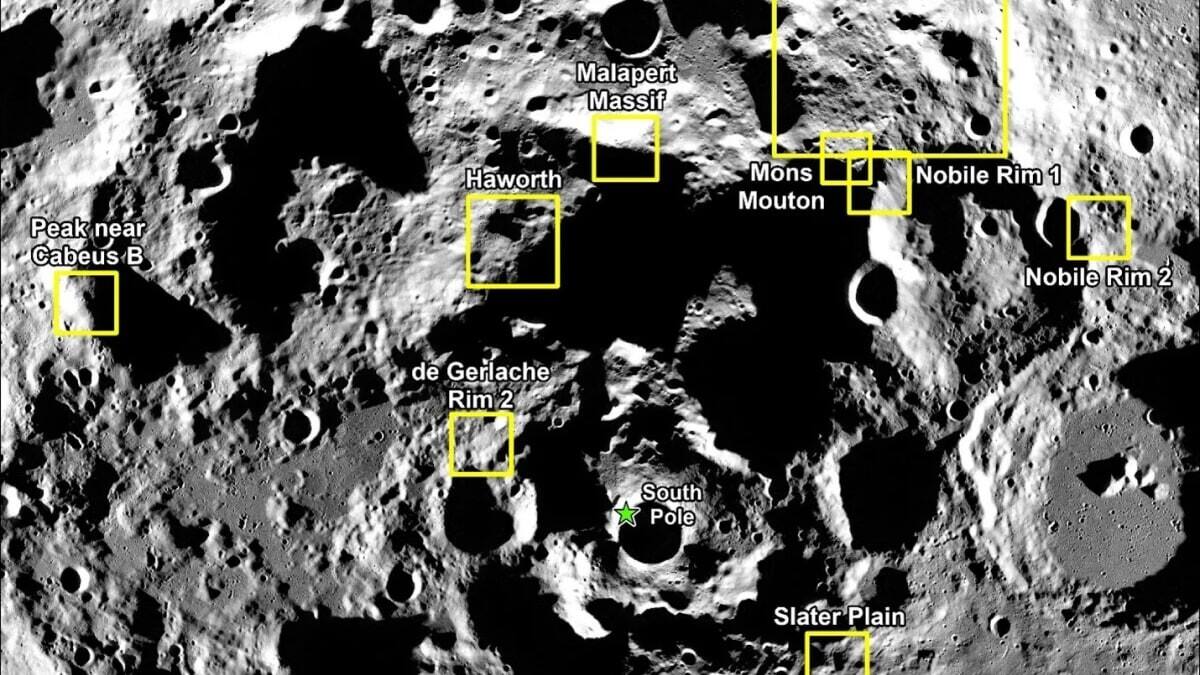
NASA reveals 9 potential landing sites for Artemis 3 mission
What's the story
NASA has revealed nine possible landing sites for its next Artemis 3 mission, a major step in the planning. The mission will mark humanity's first crewed journey to the Moon in more than half a century. The selected regions are located near the lunar South Pole, a region rich in scientific opportunities and untouched by humans so far.
Site diversity
Landing sites offer diverse geological features
The nine potential landing sites for Artemis 3 are: Peak near Cabeus B, Haworth, Malapert Massif, Mons Mouton Plateau, Mons Mouton, Nobile Rim 1 and 2, de Gerlache Rim 2, and Slater Plain. They were selected for their diverse geological features, allowing flexibility in mission planning. The lunar South Pole is especially intriguing as it contains permanently shadowed areas that may hold critical resources such as water.
Mission uniqueness
Artemis mission differs from previous lunar expeditions
The Artemis mission is different from all the previous lunar missions, including the Apollo missions. Sarah Noble, who leads lunar science division for Artemis, noted that the South Pole gives access to some of the Moon's oldest terrain. This terrain could hold cold areas with water and other important materials, providing unique opportunities for scientific discovery.
Site selection
NASA used Lunar Reconnaissance Orbiter data for site selection
NASA used data from the Lunar Reconnaissance Orbiter and examined existing lunar research to choose these regions. Scientific opportunities, terrain suitability, and timing of launch windows were some of the factors considered in their selection process. The agency intends to work with the lunar science community through conferences and workshops, to obtain more data and develop geological maps of the proposed landing sites.
Future plans
Future missions to benefit from ongoing research
NASA's assessment won't stop at Artemis 3. Future missions, including Artemis 4 and 5, will leverage this ongoing research. The precise landing sites for Artemis 3 will be revealed after the mission's launch dates are finalized. This is an important decision for planning safe landing paths and knowing what astronauts will face.